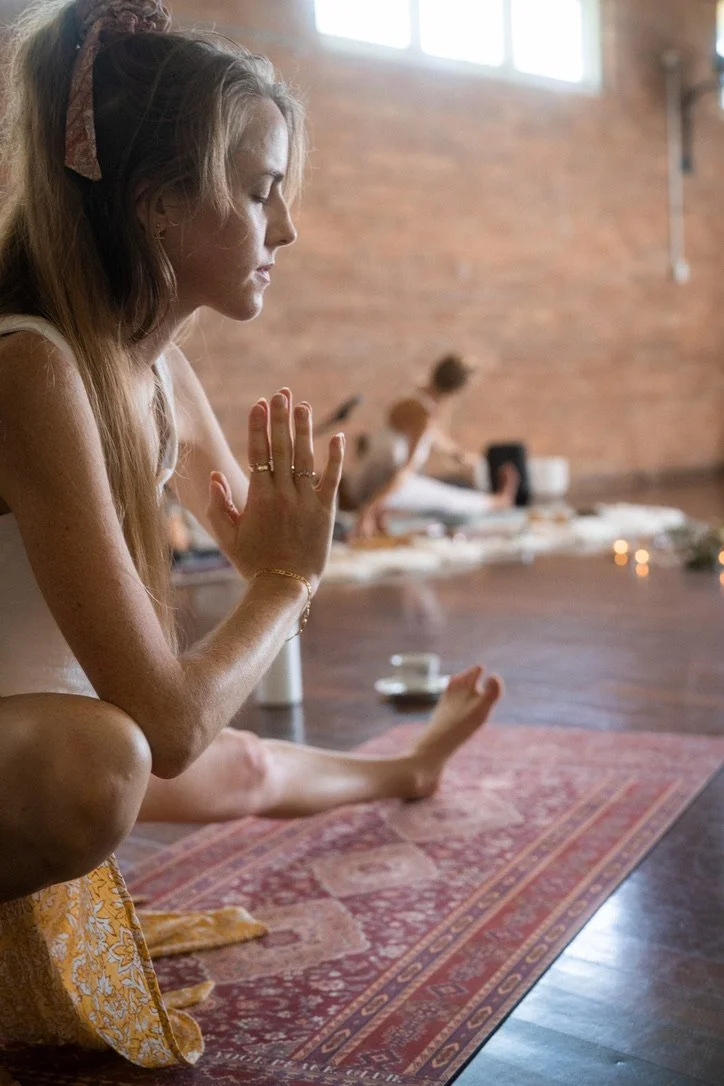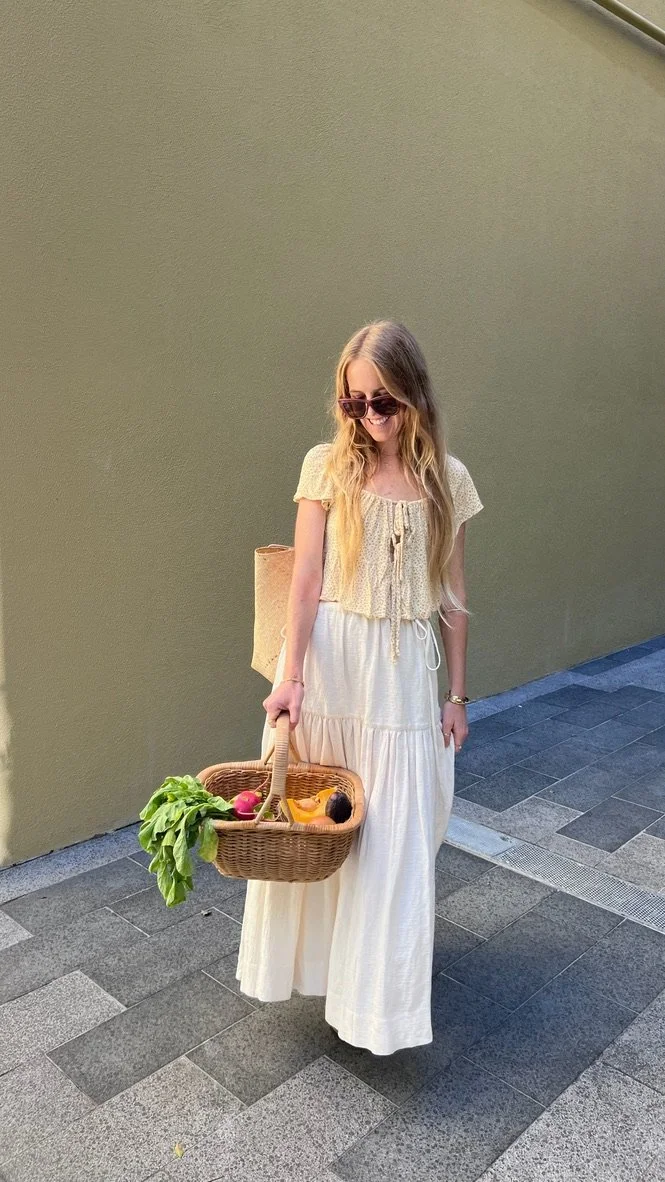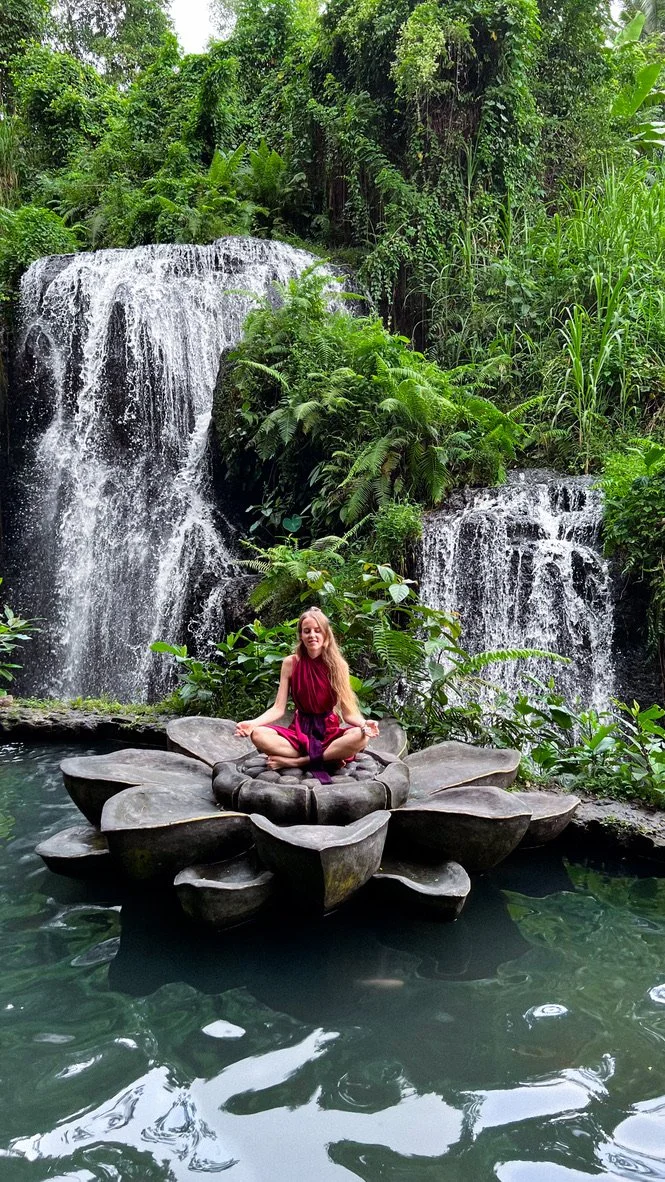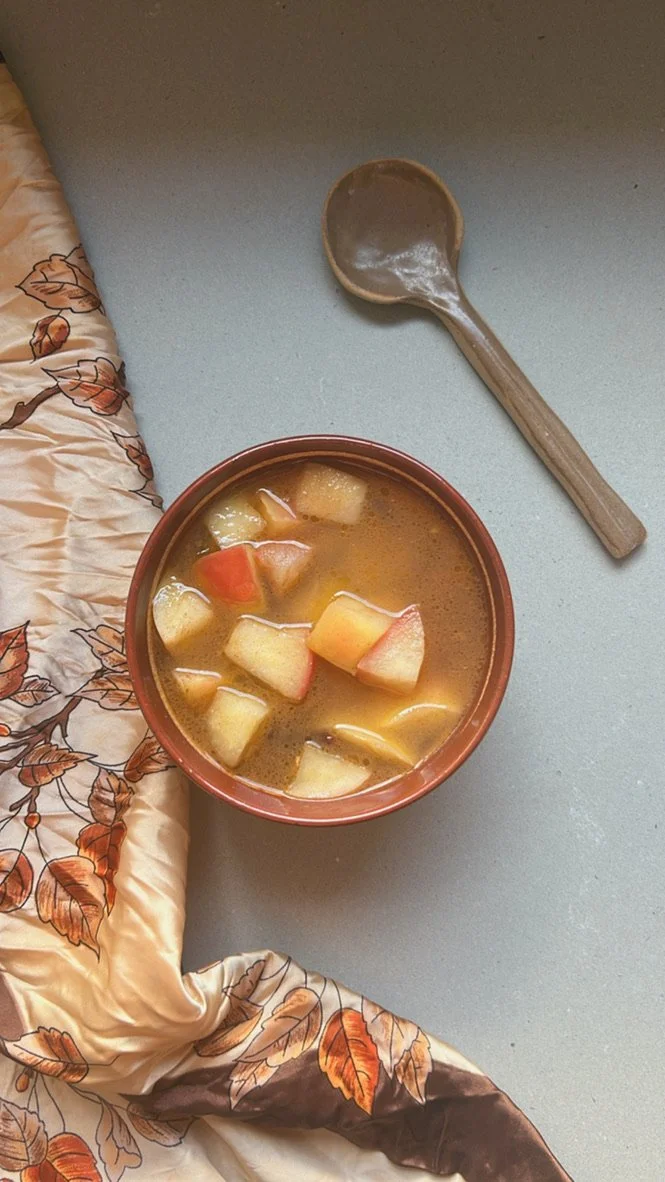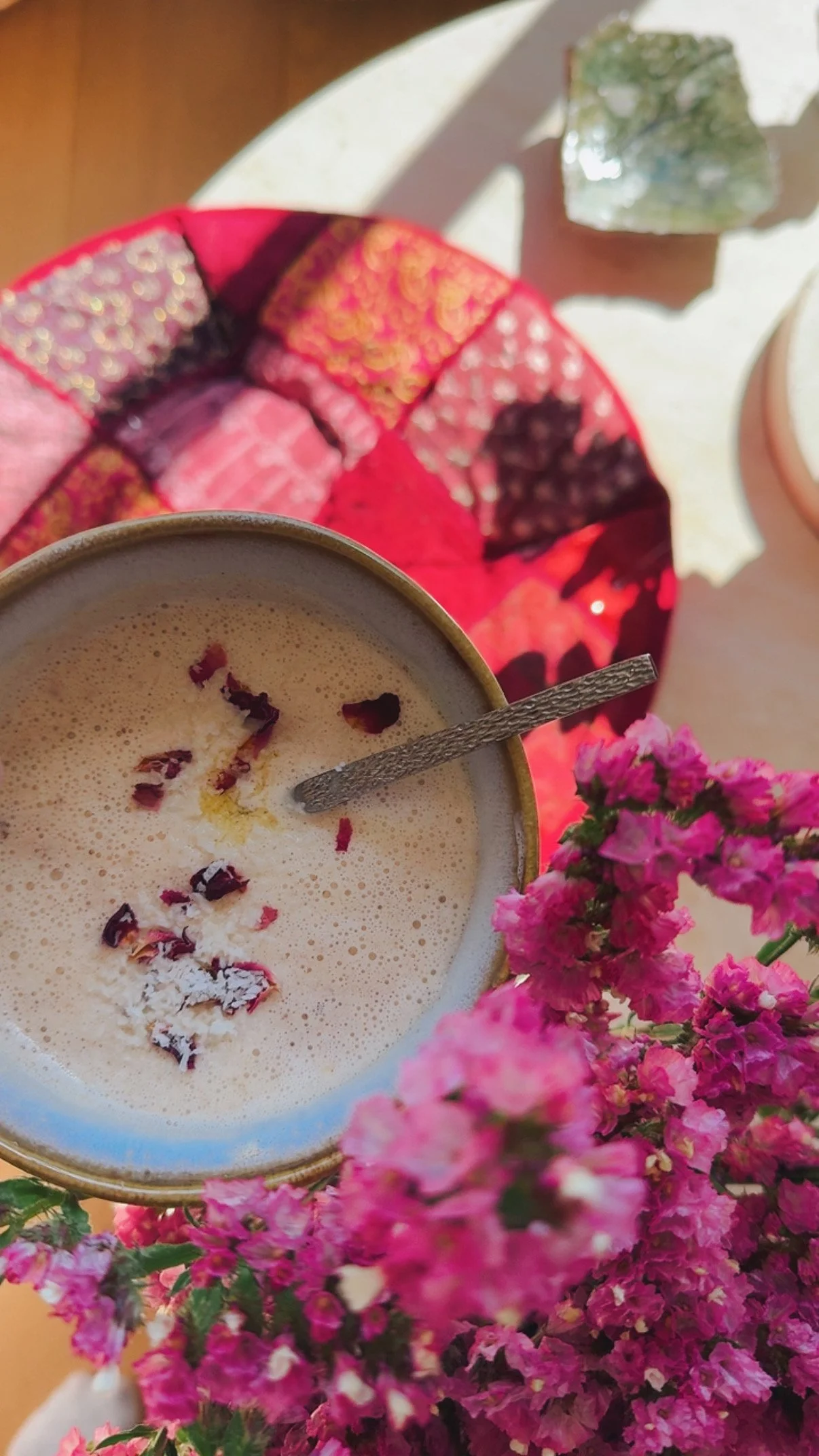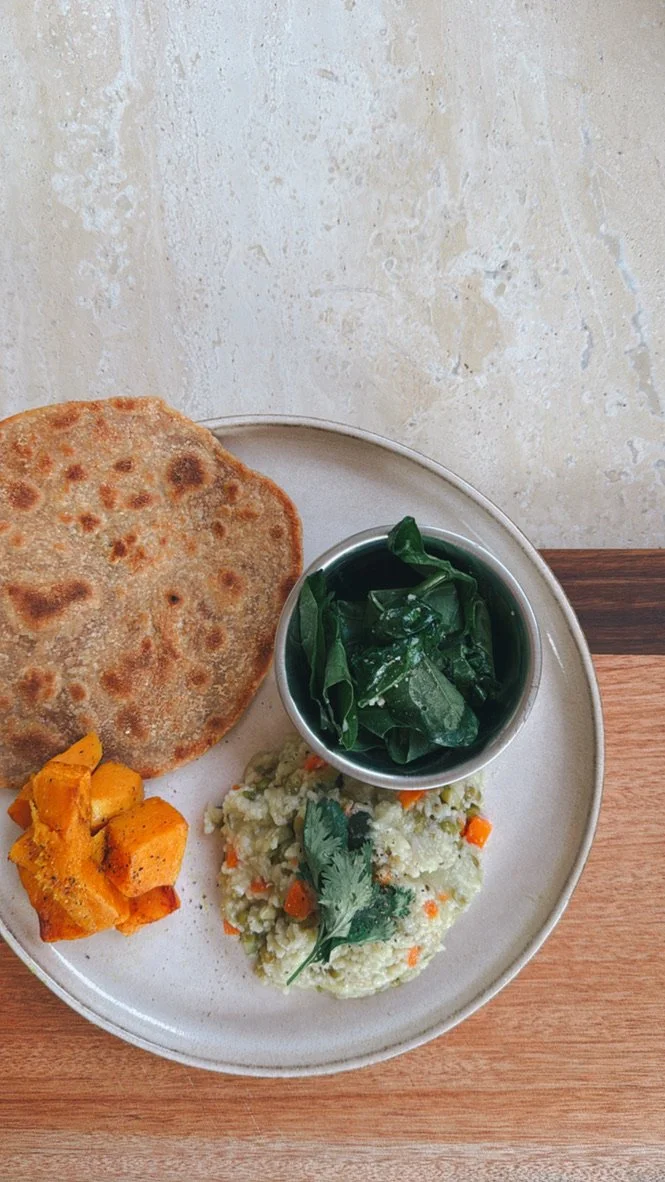living a sattvic life
In Ayurveda and yoga philosophy, the three gunas—sattva, rajas, and tamas—describe the fundamental qualities that shape our mind, behaviour, and state of being. While rajas brings movement and passion, and tamas brings rest and stability, sattva represents balance, purity, and harmony. It’s the essence of peace, clarity, and lightness—the quality that allows us to live in flow with nature and feel deeply connected to ourselves and the world around us.
As someone who lives close to the beach, loves moving mindfully, creating art, and spending time outdoors, I’ve found that living a sattvic life isn’t about perfection or restraint… it’s about cultivating a sense of ease and connection. It’s about living gently, creatively, and consciously in tune with the elements.
Bringing Sattva Into Everyday Life
So, what does it actually look like to live with more sattva?
Below, we’re going to explore ways to recognise when your energy feels off balance….and gentle, practical steps to invite more lightness, clarity, and connection into your daily rhythm.
You’ll find reflections, tips, and a few fun self-check questions (like “Have you ever noticed you feel foggy after certain meals or moods?”) to help you tune into your own natural state of balance.
let’s dig in…
The Sattvic Mind
A sattvic state of mind feels clear, grounded, and quietly joyful. There’s a sense of enoughness—a calm trust that things unfold as they’re meant to. When sattva predominates, you feel more patient, creative, and connected to others.
Have you ever noticed you feel:– Sluggish or foggy after too much screen time or heavy food
– Scattered or restless when rushing from one task to another?
– Peaceful and light after journaling, meditating, or spending time outdoors?
Those shifts are the play of the gunas in action. By recognising them, we can gently choose sattva again and again.
Qualities of a sattvic mind:– Calmness and patience, even in challenge
– Clarity and discernment
– Kindness and honesty
– Gratitude and forgiveness
– A genuine desire to learn and grow
Try this: Each evening, reflect on your day. Ask yourself, “What moments today felt sattvic?” It could be a quiet cup of tea, a deep breath, or helping someone without needing anything in return.
Sattvic Living
Sattvic living is about rhythm, balance, and nourishment. It’s waking with the sun, spending time by the ocean, and allowing movement and rest to coexist naturally. It’s about being barefoot on the earth, painting or journalling as a way to process emotions, and choosing work and relationships that feel aligned and meaningful.
Practices that support sattva include:
Starting the day quietly with pranayama, prayer, japa, meditation, or gentle yoga/sura namaskar (no phones until after sadhana)
Spending time in nature, feeling the wind, salt, and sand
Creating art or music as a form of expression and connection
Keeping a regular sleep and meal routine
Surrounding yourself with beauty and simplicity in your home
Practising gratitude, journalling, or reflection at sunset
go for a walk w/ no music or phone and just go our and explore… what do you see? what do you hear? what do you feel?
It’s amazing how much more vibrant the world feels when we simply notice.
Sattvic Food
Food deeply influences the mind. Sattvic foods are fresh, light, and full of life force (prana). They bring clarity rather than heaviness. A sattvic approach to eating isn’t about strict rules but about awareness—choosing foods that make you feel alive, grounded, and calm.
A sattvic diet includes:
Fresh fruits, vegetables, whole grains, legumes, nuts, and seeds
Herbal teas, pure water, and gentle natural sweetness like juicy medjool dates or honey
Ghee or coconut oil for nourishment and stability
Warm, home-cooked meals eaten mindfully and with gratitude
Avoiding overstimulation from processed foods, caffeine, or excess spice supports the mind’s calmness and allows agni to work steadily.
Reflection prompt:
start to Notice how different meals affect your mood:
– Do certain foods leave you feeling uplifted, focused, or peaceful?
– Do others leave you tired, anxious, or overstimulated?
– do you notice a change in how you feel when you slow down and properly chew your food?
Tip: Make one meal each day mindful. Sit down without distractions, breathe between bites, and taste each flavour fully. be a kid! play with your food and explore. Gratitude turns even a simple bowl of rice into sacred nourishment.
Sattvic Connection
Sattva also thrives in how we relate to others. Communication that’s gentle, authentic, and non-judgemental keeps energy flowing smoothly. Choosing company that uplifts you and spending time in solitude when needed both help maintain inner balance.
It’s not about detachment….it’s about being present, speaking with kindness, and giving without expectation. Acts of service, like helping others or caring for the environment, also strengthen sattva.
To nurture sattvic relationships:
– Speak truthfully, but gently.
– Listen fully, without rushing to respond.
– Choose company that uplifts you.
– Spend time alone when needed—solitude replenishes sattva.
– Offer acts of service, whether it’s caring for a friend, helping at a cleanup, or tending to the earth.
Fun reflection:
– Who in your life makes you feel calm and inspired after spending time together?
– Who tends to drain or scatter your energy?
Sattvic living isn’t about cutting people out….it’s about learning to protect your peace while offering love from a grounded place.
A Sattvic Life by the Sea
Living by the ocean naturally nurtures sattva. The sea breeze clears the mind, the sound of waves regulates breath, and the salt air purifies the senses. Whether it’s swimming, surfing, meditating on the sand, or simply watching the horizon, these moments remind us of our connection to something greater.
Sattva is not a destination…it’s a practice of presence. It’s found in small, intentional choices: in how we move, eat, create, and connect. It’s in the art we make, the care we give to our bodies, and the way we meet each moment with curiosity and grace.
Questions to Reflect On
– What helps you feel light and clear inside?
– Which daily habits cloud your energy or mood?
– How can you bring more rhythm, simplicity, or creativity into your week?
– When was the last time you felt completely present?
Feel free to share in the comments below or send me a message on Instagram! I’d love to hear from you x





